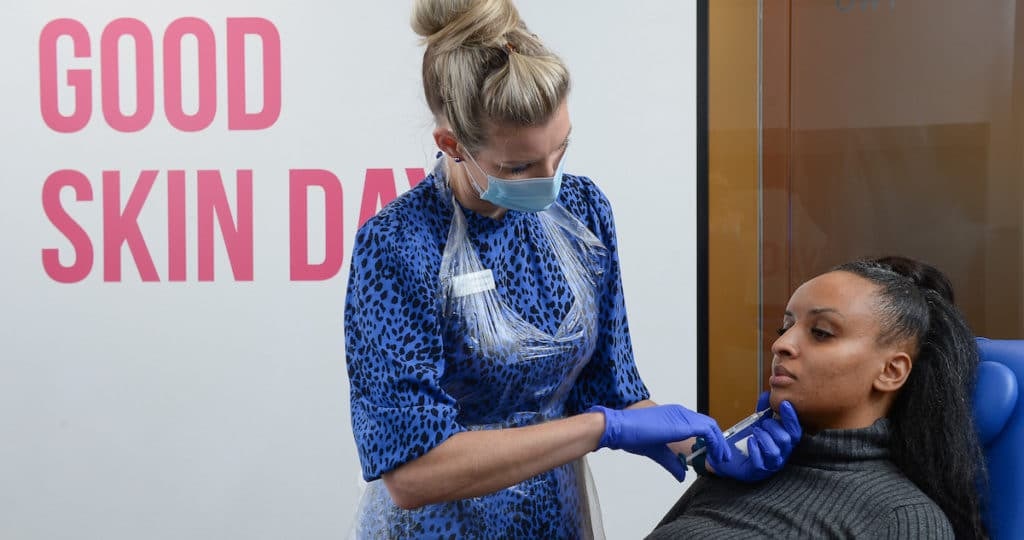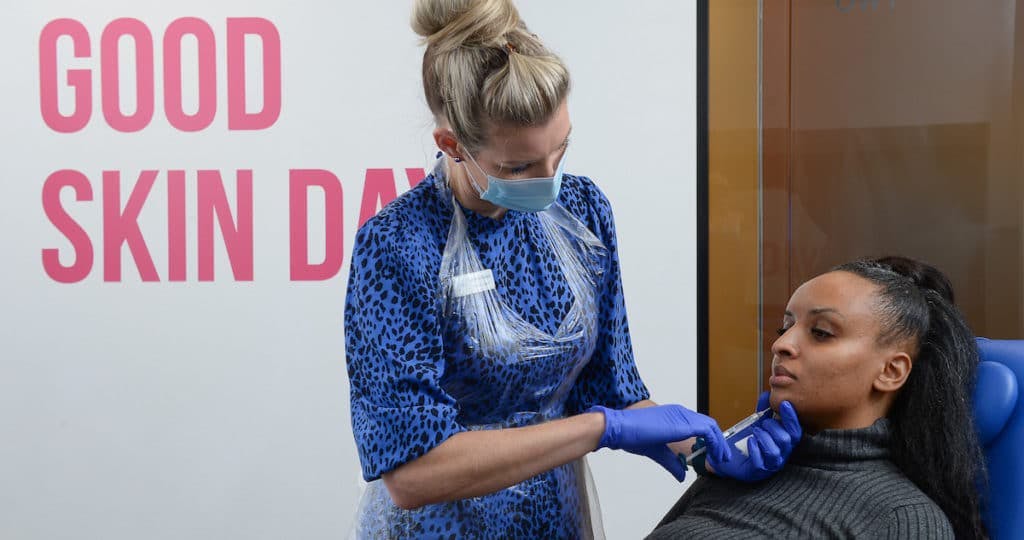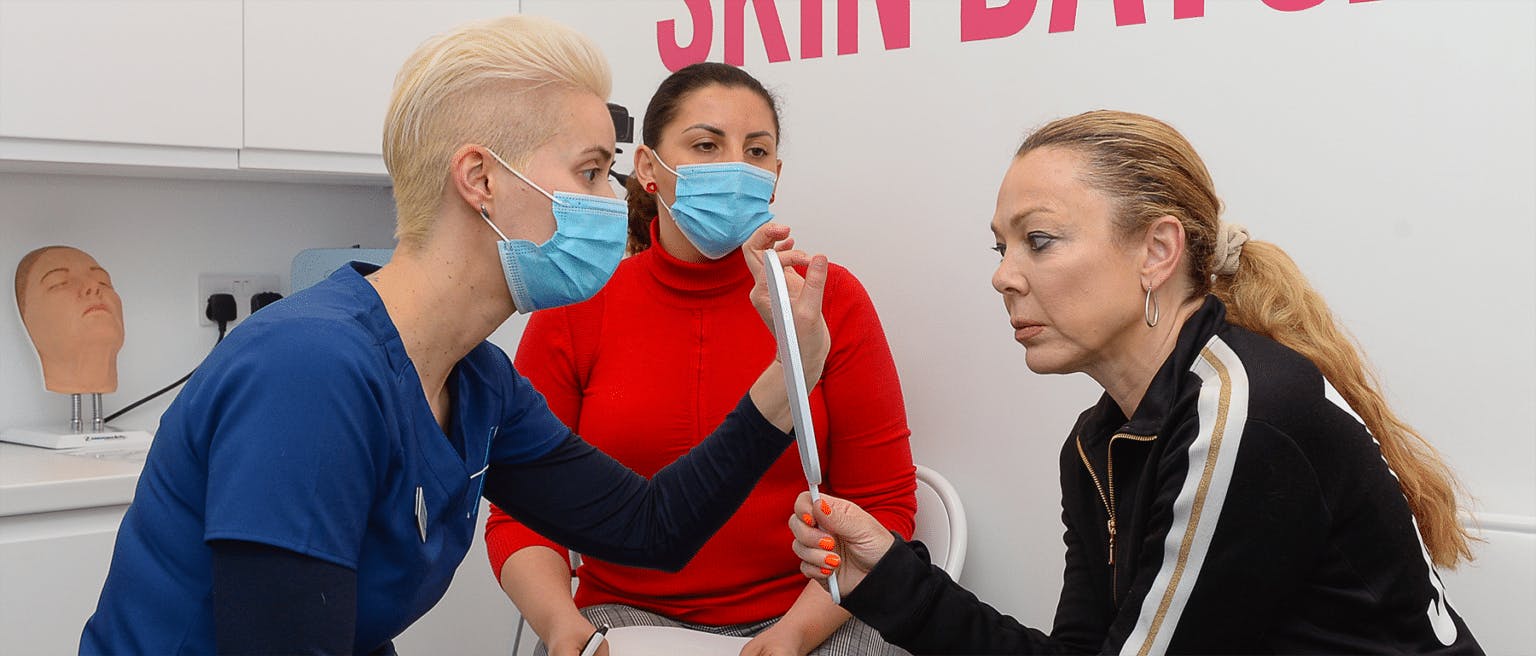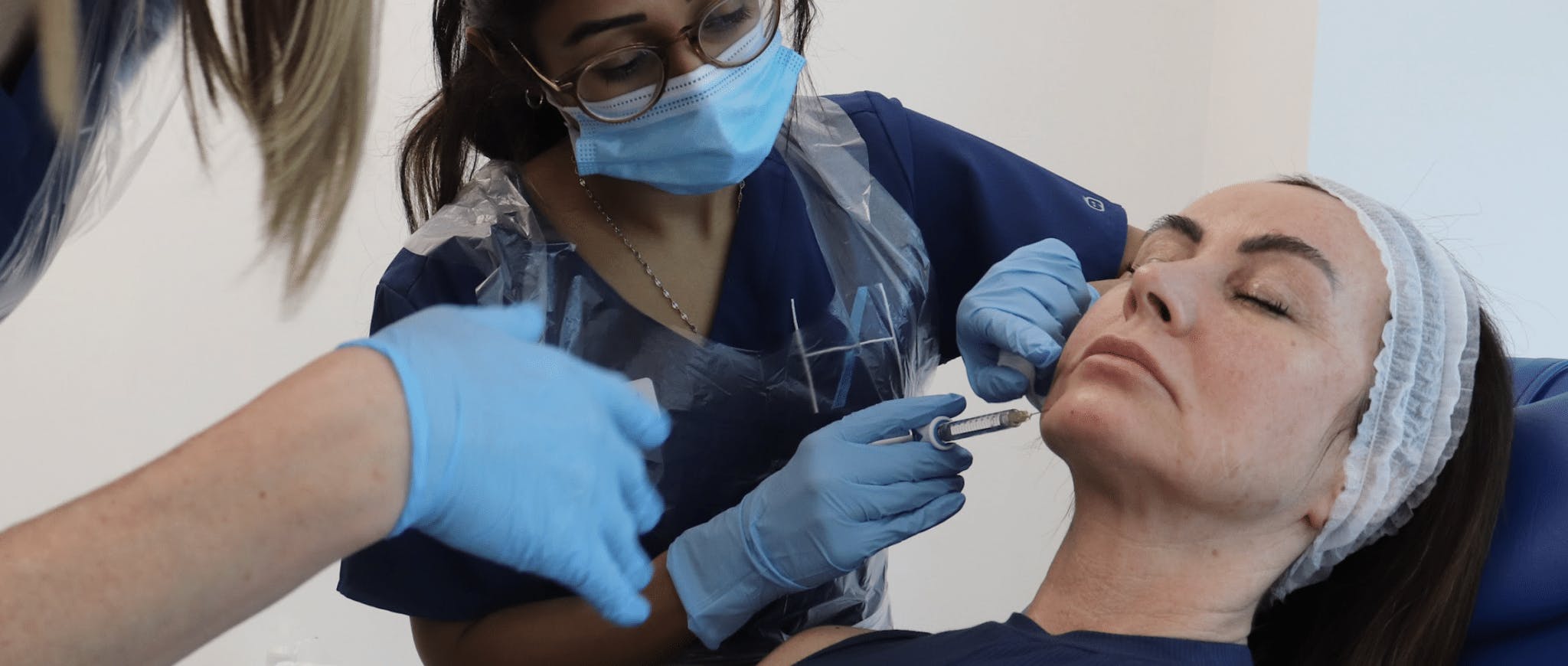Aesthetics Experts’ Chin Filler Advice

One of the first more advanced aesthetics procedures new practitioners learn is chin filler.
This increasingly popular injectable treatment can completely revamp a person’s facial aesthetic. Whether it’s used to improve the front and side profile, address chin dimples, or to masculinise or feminise a person’s appearance, this is a subtle yet impactful treatment.
Here, a number of our expert injectors give their best chin filler advice for beginners, including how to know when to move on to this area.
Whilst each has their own approach, you’ll see there is a lot of agreement between our practitioners here, especially concerning the patients who are most suitable for chin filler, why knowing your anatomy is critical and how facial assessment is vital for a successful outcome.

DEVELOP AN APPRECIATION OF THE 'MIDDLE FIFTH' AND KNOW YOUR ANATOMY
Dr Kalpna Pindolia, director of education at Harley Academy, aesthetics specialist at STORY Marylebone.
Chin filler is the secret weapon in our aesthetic practitioner’s tool box!
It’s often not something a patient may think of, yet it can have a significant impact on the front and side profile. It can also be a wonderful way to provide overall feminisation or masculinisation to the face.
Additionally, it can subtly change the whole impression of the face’s lower third, in consideration with other features, such as the lips.
Chin filler can also help reduce muscle movement in the region, so is useful for addressing peau d’orange dimpling and chin clefts. It is also a solid alternative to surgical implants.
The best candidates for chin filler are:
- patients concerned about a recessed chin
- men with a narrow, pointy chin who would prefer a more square, traditionally masculine shape
- women with a wide, square-shaped chin who would prefer a narrower, more pointy look that is considered societally “feminine”.
A key concept in beautification that is appropriate for the male and female is appreciation of the “middle fifth” in front profile.
If you draw a vertical line from the medial canthi, the intercanthal distance is the middle fifth. This distance is constant with ageing, so makes a good reference point. Apart from your nostrils and lip volume being within this distance, a feminine chin will have it’s point within this – as also represented by the inverted triangle of youth. The medial canthus is the inner corner of the eye, near the nose bridge.
What do new injectors need to know before moving on to learning chin filler techniques? Anatomy, anatomy and did I mention anatomy? In particular, know where your blood vessels lie within the region, including depth.
Product selection is also key for a successful chin filler treatment. You are aiming to cause lift with a cohesive product that is malleable enough to use superficially.
"My top tips for aesthetics practitioners just starting out with chin filler, are as follows...
Concentrate on upper and mid-face treatments first.
Deep treatments on bone first, then superficial.
Consider the impact on the whole face, front and side profiles, as well as the local area, such as the jawline."
ALWAYS ASSESS THE CHIN FROM THE FRONT ASPECT AND KNOW BOLUS ONTO BONE
Dr Andrew Kane, Harley Academy senior clinical trainer and aesthetics specialist at STORY Southwell.
I feel a good time to start learning chin filler is once you have experience and are comfortable treating cheeks and lips, and also comfortable with a cannula.
It’s a good treatment for men and women for improving the side profile, especially if they have a weak, retrognathic or set-back chin which can also make their nose look more prominent.
For men, this type of filler treatment can make their chin and jawline appear more traditionally masculine and square. For women, it can make their chin appear more traditionally feminine, especially as they age. This is because the chin starts to take on more masculine features and the lower third of the face usually decreases in height due to the ageing process, so chin filler can help rebalance this.
When it comes to chin filler injecting techniques, practitioners need to know bolus onto bone for the structural chin support area, as well as potentially supporting the pre-jowl sulcus. They then need to be able to use a cannula to layer the filler and blend the chin with the jawline.
It’s important to examine the chin from the front aspect to assess width. We want to keep the chin within the boundaries of the alar base for women – the corners of the nose – and within the width of the mouth for men – slightly wider.
In terms of side profile, it’s important to decide whether we want to add volume vertically to increase lower face height or horizontally to bring the chin out. This will determine where we want to place our initial injections which will generally be bolus onto bone. Once we are happy with this we can use a cannula to blend and sculpt the chin so that it contours nicely with the jawline.
Ensure you don’t put too much volume in the chin in one go, ie no more than 2ml per session in the chin alone, ideally. It’s important that a thorough assessment is carried out to decide what we want to do specifically to enhance the chin before we start and also crucial not to treat the chin in isolation.

CAREFUL EXAMINATION IS THE KEY TO A SUCCESSFUL CHIN FILLER TREATMENT
Dr Joanna Hackney, senior clinical trainer and aesthetics specialist at The Academy Clinic.
This is an area I would recommend progressing on to once you have built confidence utilising the supraperiosteal bolus technique in the mid-face.
Once you are competent, you can apply the same principles to layer five injections elsewhere in the face and then, ultimately, with more experience you can also progress to using a cannula in layer two in this area.
Chins are a great area to treat and can really balance a patient’s profile well. However, the key to a successful treatment in this area is careful examination and assessment. Where do you need to add volume to improve aesthetic outcomes?
Injections supraperiosteally in this area can be quite tender as the mentalis muscle is stretched with the bolus, so inject slowly and reassure your patient as you go.
Ensure you keep your boluses to 0.3ml or less, and observe the skin in the area you are injecting as you treat.

BE CONFIDENT WITH SUPREPERIOSTEAL BOLUSES, CANNULA USE AND BLOOD SUPPLY KNOWLEDGE
Dr Jess Srivastava, clinical trainer, 2021 Allergan Sparks Talk finalist and aesthetics specialist at Dr Jess Aesthetics.
Chin filler offers profile harmonising and balancing benefits to patients and are especially useful when treating those with a retrognathic or short chin.
In male aesthetics patients, chin filler can balance and “masculinise” a face by creating a wider and more prominent chin. In females, chin filler can balance and “feminise” a face by creating a narrower chin.
Before injecting the chin, injectors need to have a sound knowledge of chin anatomy, in particular the blood supply. They also need to be confident with both supraperiosteal boluses and cannula use as often a combination of both is required in a lot of patients, in my experience.
Having had chin fillers myself, I would warn patients that they are likely to experience a tight and tender sensation in the chin. Also, on the day of injection they may also experience numbness that can last the remainder of the day.
I would advise patients against massaging as we don’t want them to move the filler. Also, let them know that swelling may take 7-10 days to fully settle.

CHIN FILLER TRAINING
If you feel you are ready to move on to this popular, more advanced aesthetics treatment, there are two hands-on mentoring sessions that can benefit you.
As cannula use plays a critical role in ensuring elegant outcomes from chin filler, make sure your technique is on point with a tailored 1:1 Training Session in Mid-Face and Cannula.
Next – or if you are already a confident cannula user – our guided 1:1 Training Session in Lower Face and Jawline will provide you with outstanding personalised advice and oversight.
In addition to mastering how to administer subtle chin filler treatments and examining the lower face holistically, these sessions also allow you to gain practical advice and insights from experienced aesthetics professionals whilst treating your own patients.
For more information on our one-to-one training courses, or to see our full range of aesthetic medicine training courses we offer, download the latest Harley Academy prospectus or book a call with our head of student recruitment who will be happy to decide on the course best suited to you.
All information correct at the time of publication
Download our full prospectus
Browse all our injectables, dermal fillers and cosmetic dermatology courses in one document
By submitting this form, you agree to receive marketing about our products, events, promotions and exclusive content. Consent is not a condition of purchase, and no purchase is necessary. Message frequency varies. View our Privacy Policy and Terms & Conditions
Attend our FREE open evening
If you're not sure which course is right for you, let us help
Join us online or in-person at our free open evening to learn more
Our Partners














STAY INFORMED
Sign up to receive industry news, careers advice, special offers and information on Harley Academy courses and services

